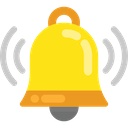crj7driver
Jedi Trainee
Offline
I just put on new front hubs on my 6 and have a question. The book says to tighten the castle nut to 5 ft/lbs and then back it off to align the next available cotter pin hole. It also says to allow .003 to .005 end float.
This allows a little slop in the bearings, when I was a bike mechanic and would adust hubs you wanted no play, but also no binding or grinding sensation caused by the bearings being to tight. If the bearings were to loose the slop would cause the bearing races to be damaged by the free play in the bearings.
If I adjust it the way they say, 5lbs of torque I can almost un-screw the nut with my fingers (I don't remember how "loose" it was when I removed them). Should I try not backing the nut off and seeing if I get any float once the wheel is on and I have more leverage?
Just curious what is normal/right, since this is my first set of car hubs that I am adjusting.
This allows a little slop in the bearings, when I was a bike mechanic and would adust hubs you wanted no play, but also no binding or grinding sensation caused by the bearings being to tight. If the bearings were to loose the slop would cause the bearing races to be damaged by the free play in the bearings.
If I adjust it the way they say, 5lbs of torque I can almost un-screw the nut with my fingers (I don't remember how "loose" it was when I removed them). Should I try not backing the nut off and seeing if I get any float once the wheel is on and I have more leverage?
Just curious what is normal/right, since this is my first set of car hubs that I am adjusting.

 Hi Guest!
Hi Guest!

 smilie in place of the real @
smilie in place of the real @
 Pretty Please - add it to our Events forum(s) and add to the calendar! >>
Pretty Please - add it to our Events forum(s) and add to the calendar! >> 